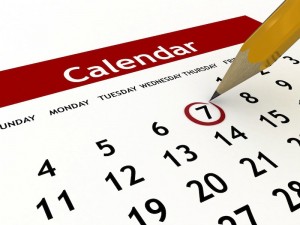Performing a volume diet if you decide to train in the gym is essential if you want to gain muscle mass. However, there are many doubts about how to carry out this diet correctly.
A volume diet requires knowing about nutrition, it requires correctly dividing the year into periods (definition period, volume period and maintenance period) and of course requires knowing our metabolic expenditure and our goals to the millimeter.

Among the most common mistakes of a bad diet of this type, we find ourselves from gaining too much fat, to not taking the muscle that we have proposed. Objectives that are obviously caused by poor diet management.
The good news is that if you’ve decided to go on a bulking diet, you already know more than 50% of the population about nutrition. You already know that muscle mass is essential and you no longer believed in stupid things like the bikini operation and strict diets.
Therefore, if you do not know where to start, you are in the right place. we are going to explain how you can correctly carry out a volume diet, gaining the maximum amount of muscle possible and gaining as little fat as possible. That is why it is important that from now on, you pay special attention.
What do you need to do a volume diet?
- A scale and a meter.
- A calorie counter program like MyFitnessPal.
- Calculate your basal metabolism.
- Know how to train correctly in the gym (otherwise you will not gain muscle mass but only fat).
Instructions for doing a volume diet
- Calculate your basal metabolism:
The number 1 mistake of nutritionists and doctors when prescribing diets is to believe that we are all the same. Surely you have friends who eat little and gain weight and others who are lazy, sedentary and gluttonous but who seem to be malnourished. This is due to the basal metabolism, which tells the calories that our body burns at rest. To calculate your basal metabolic rate, start by counting the calories you normally consume during a week without exercising. To do this, help yourself with programs such as my fitness pal and the nutritional labels of the products. Use the scale to know your weight before and after the week, if you have gained weight, it is because you are eating too much, if you are losing it, it is because you are eating too little and if you maintain it, it is because those calories are your basal metabolism. - Per iodize the year and calories according to your somatotype:
There are three types of somatotype, the ectomorph, the mesomorph and the endomorph. If you are a very skinny guy and you eat a lot, you are an ectomorph, if you are muscular by nature and your calorie expenditure is normal for your weight, you are a mesomorph, and if you are fat eating little, you are an endomorph. We are going to choose to perform a slow volume, adding only 700 calories of consumption to your basal metabolism calories (some more if you do a lot of sport). As the ectomorph has problems gaining weight, he will perform 6 months of volume, 3 months of definition and 3 months of maintenance. The mesomorph will need 4 and half months of volume, 4 and half months of definition and 3 of maintenance. As the endomorph has problems losing weight, it will only be 3 months of volume, 6 of definition and 3 of maintenance. - Clean eating:
Going up 700 calories what you eat does not mean having to stuff yourself with junk food. To achieve more muscle mass and less fat, you need to eat clean meals that have calories from slow carbs, unsaturated fat, and protein. Eat clean foods like meats, legumes, avocados, oatmeal, or fish. - Second measurements and control:
Every week you will control your weight and the contour of your arms, neck, chest, waist, abdomen… (Add the muscles in which you want to increase). With a good volume you usually gain half a kilo per week, therefore if you gain less you need to eat more and if you gain more you need to eat less(that’s where you’re gaining more fat than muscle mass).
Tips for doing a volume diet
- Strength training: The best thing about volume diets is that it is the time when you have more strength to lift weights. The muscle will be full of energy, which you can take advantage of to increase strength in all exercises. The good thing about this is that normally the more strength you have, the more muscle you will generate (a bigger muscle is always stronger no matter what they say). You can also use supplements like creative, which is the best supplement I know for the increased strength and improved muscle recovery (muscle is created at rest from lifting weights).
- The truth hurts: It is inevitable that you will take fat when performing volume diets (for that there is the definition diet after). In a well-performed volume diet, 50% muscle, 30% fat and 20% liquid are usually taken. Another inconvenient truth is that on the cutting diet you are going to lose some of that muscle (as long as you don’t take steroids or anything like that) while trying to lose fat and water, leaving you with only a net gain of muscle in 5 and 20% (the more experience, the less profit). The point is to arrive at the maintenance period in better physical shape than the previous year.

















